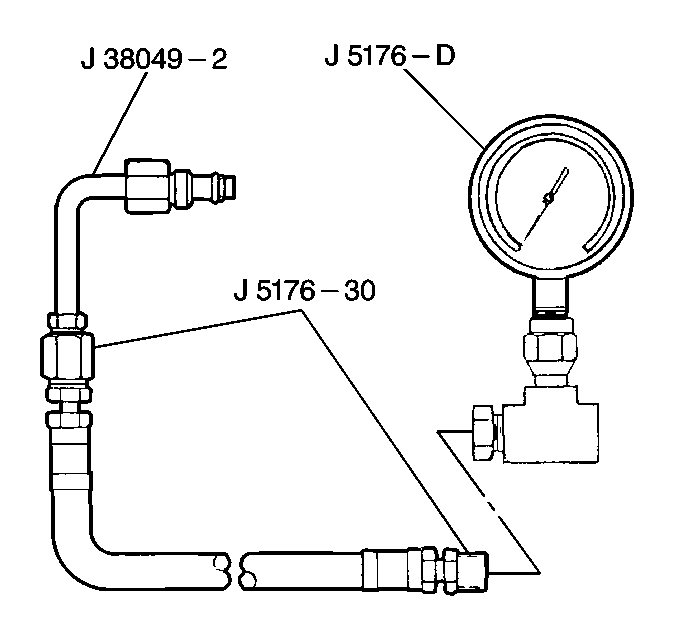- Connect a spare pressure hose to the pump.

- Connect the J 25323-A
or J 5176-D
to both of the hoses.
The J 25323-A
will
measure the flow rate as well as the pressure.

- Open the valve on the
gauge.
- Start the engine.
| 4.1. | Allow the system to reach normal operating temperature and pressure. |
The operating pressure range with the valve open is 552-862 kPa
(80-125 psi).
| 4.2. | Inspect the fluid level. |
Add fluid if required. Refer to
Checking and Adding Power Steering Fluid
.
| 4.3. | Inspect the hoses for restrictions if the pressure is more than
1035 kPa (150 psi). |
Important: Do not leave the valve fully closed longer than 5 seconds. Closing
the valve for longer than 5 seconds may damage the pump.
- Fully close the valve 3 times.
- Record the pressure reading each time the valve is closed.
The 3 readings should be within 345 kPa (50 psi) of each
other. The pump is functioning properly if the pressure readings are at least
6895 kPa (1000 psi). If the pressure readings are high enough
but not within 345 kPa (50 psi) of each other the valve in the
pump is sticking. Perform the following procedure in order to correct the
condition:
| 6.2. | Clean the valve with a crocus cloth. |
| 6.4. | Flush the valve if the system contains dirt. |
| 6.5. | Disassemble the pump and the steering gear if the system is dirty. |
Refer to
Steering Gear Replacement
.
- Complete the following steps if the pump tests to specification:
| 7.2. | Turn the steering wheel to both stops |
- Record the highest pressure.
Compare the highest pressure to the recorded highest pressure. If the
pressure at both of the stops is not the same as the maximum pressure, the
steering gear is leaking internally.
- Disassemble and repair the steering gear if the steering gear
is leaking internally. Refer to
Steering Gear Replacement
.
- Turn off the engine.
- Remove the testing gauge.
- Remove the spare hose.
- Reconnect the pressure hose.
- Inspect the fluid level.
Refer to
Checking and Adding Power Steering Fluid
.


